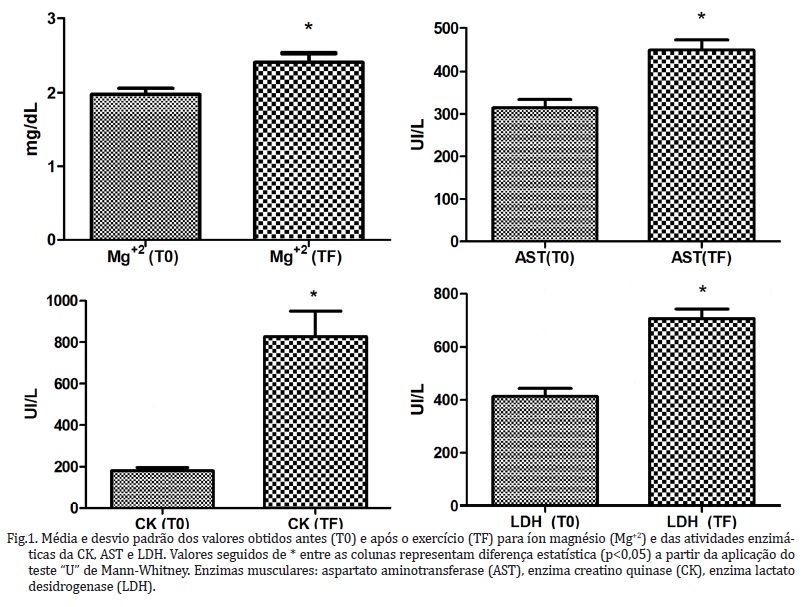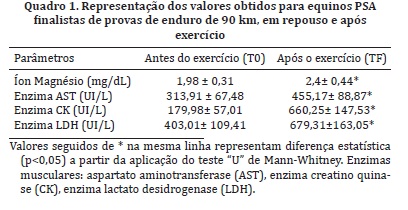In recent years, due to rising competitive demands, the equine athlete is being increasingly required. Thus, the demands for high performance have fostered interest in the study of pathophysiology of various horse diseases. The relationship between magnesium and exercise has received significant attention because this ion is closely related with the skeletal muscle tissue. Moreover, among the main strategies for the detection and monitoring of clinical muscle damage, features the evaluation of the activity of the enzymes creatine kinase (CK), lactate dehydrogenase (LDH) and aspartate aminotransferase (AST). The search for the establishment of parameters that relate to each other is a determining factor in understanding the physiological changes found on athletic horses in effort. Thus, this study aimed to determine how the blood concentrations of magnesium ion and the enzymatic activities of the enzymes CK, LDH and AST behave in Arabian finalist horses in endurance races of 90km and to relate possible changes to the type of physical effort played by animals. It was evaluated the enzymatic activities of the enzymes CK, LDH, AST e the concentration of the ion magnesium in exercise in relation to the rest state of 14 clinically healthy Arabian horses, 9 males and 5 females, with ages ranging from 6 to 12 years, undergoing endurance training and participants in 90 km distance rides. All variables evaluated had an increase with statistical differences in relation to rest. The physical endurance exercise determined the occurrence of changes in enzyme activities of CK (p≤0.001), LDH (p=0.0001), AST (p=0.0007) and in the concentration of magnesium ion (p=0.0004), in exercise in relation to rest (p≤0.05). Fact that determined changes in permeability of striated skeletal muscle cells, suggesting the establishment of an acute inflammatory process. Mainly due to the expression of enzymatic activity of CK (p≤0.001), for its specificity in relation to the damage to skeletal striated muscles, along with the magnesium ion (p=0.0004) that actively acts in various cellular reactions. There were changes in total plasma protein concentrations (p=0.0009) and hematocrit (p=0.0001), between the evaluated moments. Therefore, these results serve as a reference of support equine finalists in an endurance race of 90 km, aiding in the prevention of the occurrence muscle damage and severe inflammatory processes.
Equine athlete; striated skeletal muscle; exercise



